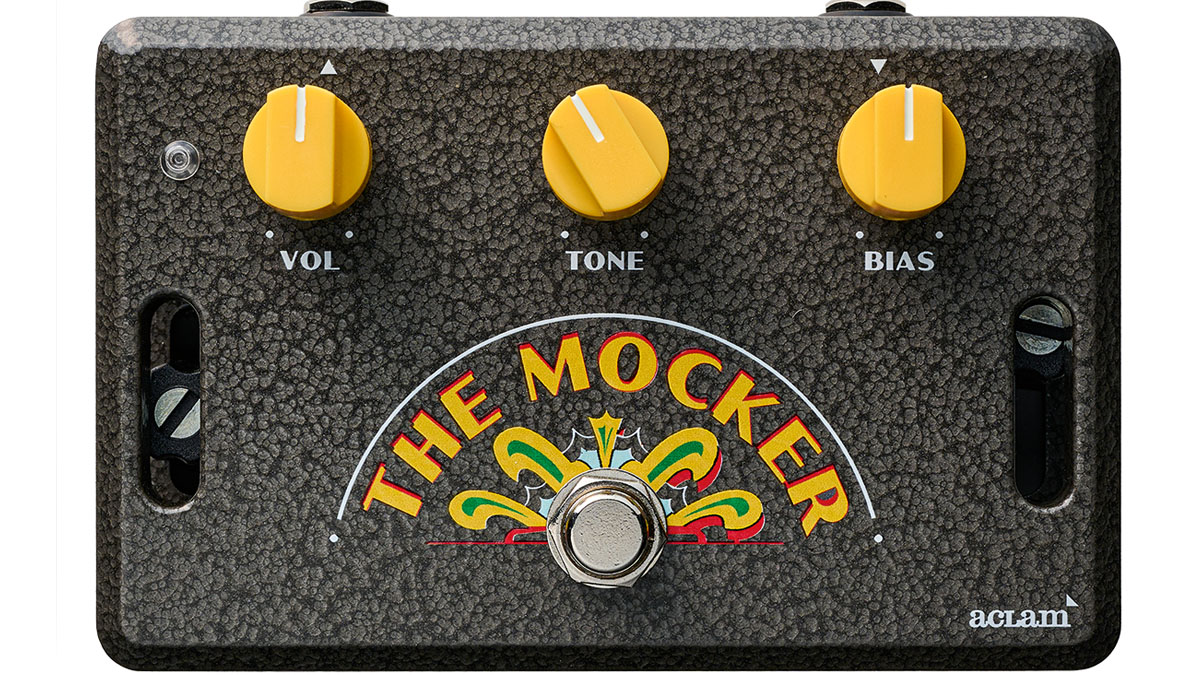Guitar World Verdict
The Beatles connection aside, this is an excellent fuzz pedal in its own right.
Pros
- +
Revives a rare sound from the past.
- +
Good clean-up characteristics.
- +
Practical Tone knob range.
- +
Bias knob offers flexible sonic variations.
Cons
- -
The Smart Track Fastening System makes the pedal a little bigger than some might like.
You can trust Guitar World
Barcelona-based pedal company Aclam is continuing its quest to put specific sounds of yesteryear in pedals with The Mocker, another one with a Beatles connection.
A couple of years back the company came up with the Dr Robert, a pedal that offered the sounds of the extremely rare Vox UL730 amp that The Beatles had supposedly used on various recordings at Abbey Road Studios, notably on the Revolver and Sgt Pepper’s albums.
While that pedal pretty much nailed the sound of the amp, there was one thing missing and that was the sound of the amp’s in-built foot-switched distortion circuit – a typical 1960s fuzz. Now, the company has completed the task with The Mocker, a replica of that UL730 circuit, even down to using the same NOS Phillips OA200 diodes as the original.
The pedal follows the original amp’s ‘on or off’ effect to an extent in that the amount of fuzz is fixed. However, this iteration of the circuitry has plenty of scope for dialling in sonic variations with added Bias and Tone knobs.
A Volume knob sets the overall output of the fuzz pedal and anywhere over its 10 o’clock position will give you a volume boost. The Tone knob doesn’t do anything too radical but operates in a practical musical range, adjusting the top-end presence and matching the pedal to whatever amp you’re using.

Things get interesting when it comes to the Bias knob. From around its 9 o’clock position through to fully clockwise, you get a conventional fuzz sound with subtle variations along the dial, mainly in feel and note attack. It’s a nice amount of fuzz – smooth and sustain-y, with very good clean-up characteristics putting you in complete control with your guitar’s volume knob.
For those who like something a little more raucous, below that 9 o’clock position we start to get into gated sounds, changing by degree from textural grittiness to absolute spluttery mayhem at its minimum position.
All the latest guitar news, interviews, lessons, reviews, deals and more, direct to your inbox!
As always, we welcome the revival of any notable guitar effect from the past, and while the UL730 fuzz ranks fairly high on the obscurity scale, it is a sound that has pedigree – there’s a Beatles connection via the fuzz circuitry being an integral part of the UL730 and other UL-series amps that the band had access to.
Specs

- PRICE: $299 / £269
- ORIGIN: Spain
- TYPE: Fuzz pedal
- FEATURES: Relay true bypass, Smart Track pedalboard mounting, soft-touch footswitch
- CONTROLS: Volume, Tone, Bias, Bypass footswitch
- CONNECTIONS: Standard input, standard output
- POWER: 9V DC adaptor (not supplied) 12mA
- DIMENSIONS: 137 (w) x 88 (d) x 55mm (h)
- CONTACT: Aclam Guitars
Trevor Curwen has played guitar for several decades – he's also mimed it on the UK's Top of the Pops. Much of his working life, though, has been spent behind the mixing desk, during which time he has built up a solid collection of the guitars, amps and pedals needed to cover just about any studio session. He writes pedal reviews for Guitarist and has contributed to Total Guitar, MusicRadar and Future Music among others.


